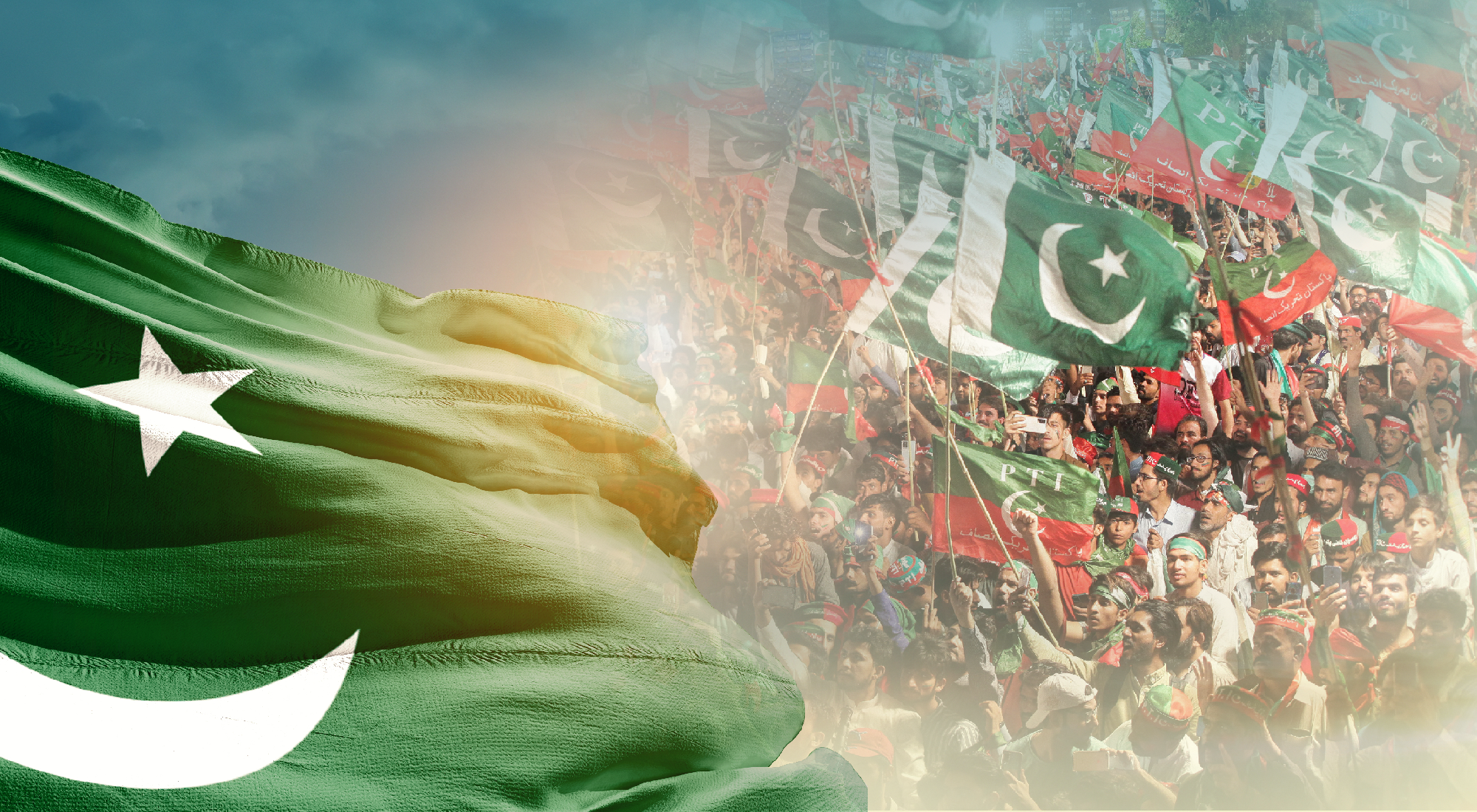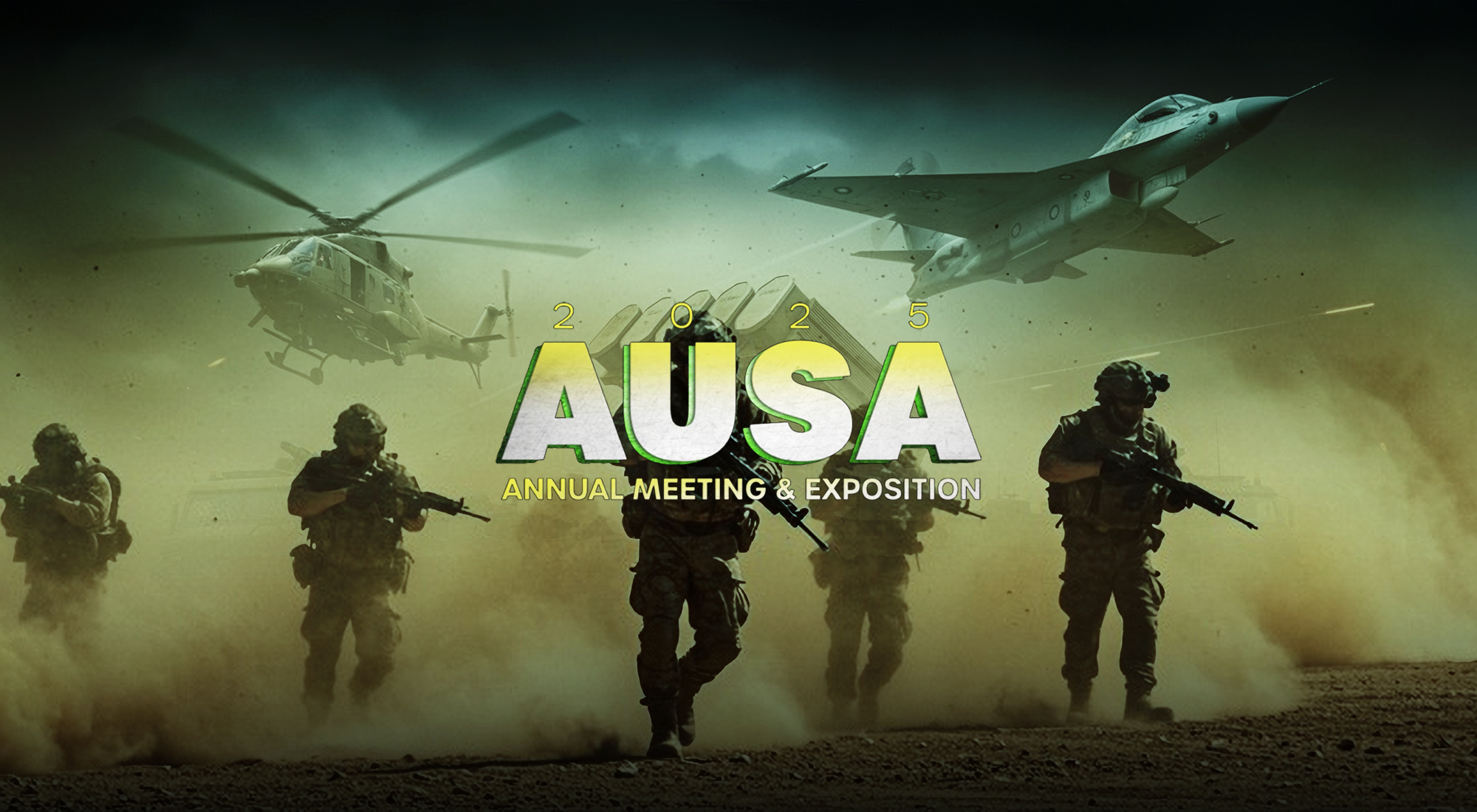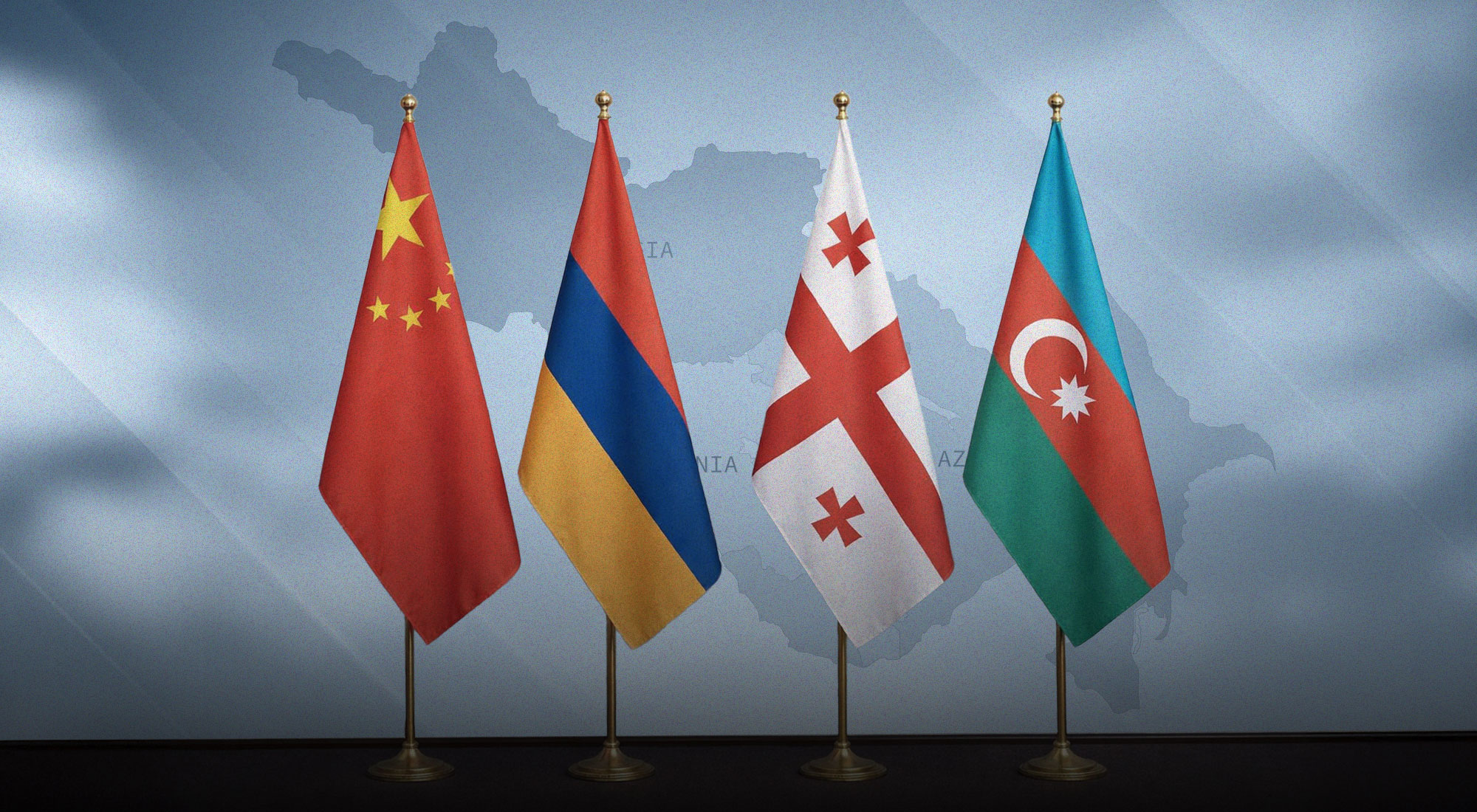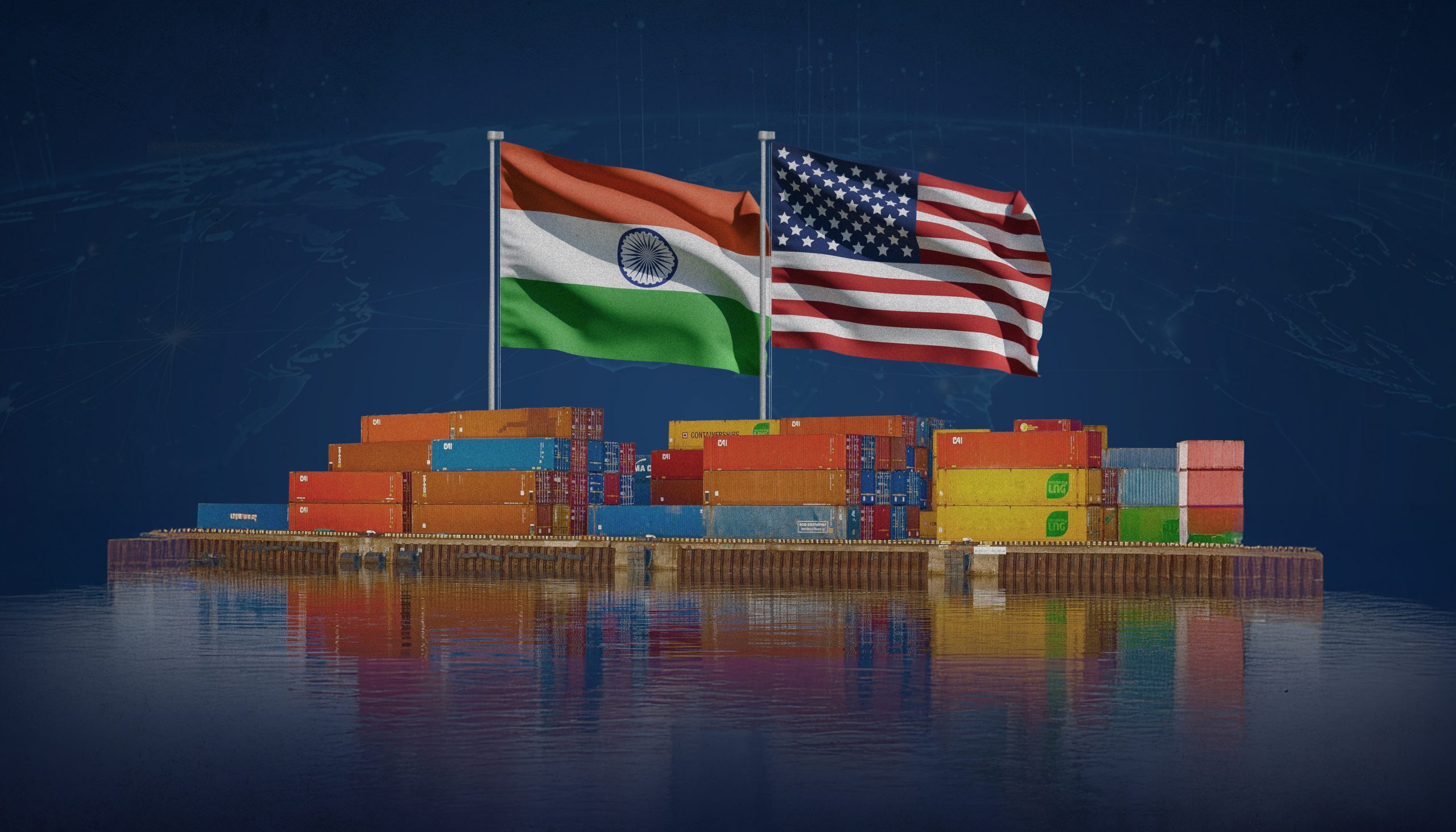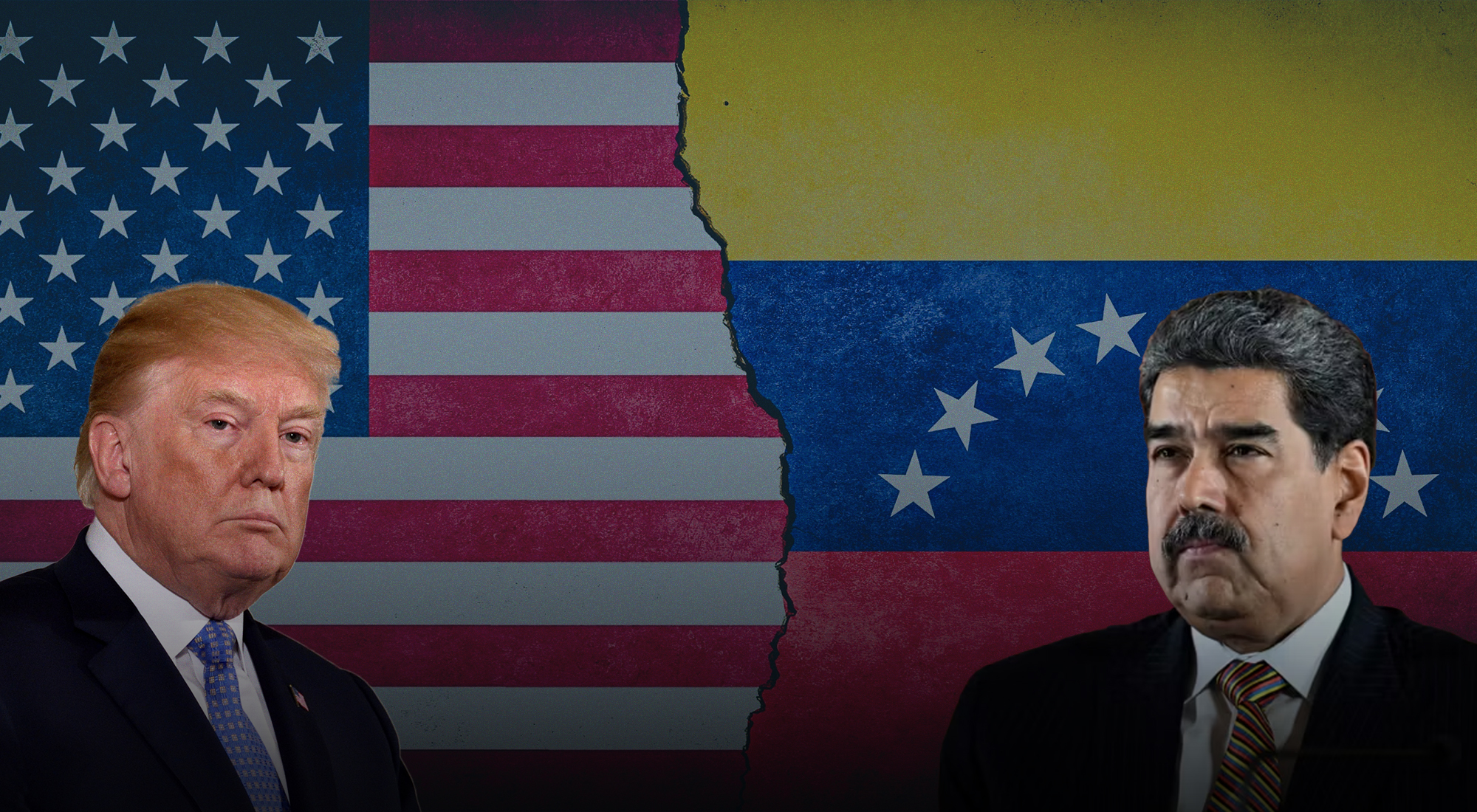Any study of Pakistani affairs drags the writer into a labyrinth of dark conspiracies, lethal animosities, and vicious assassinations involving villainous politicians, religious zealots, and power-hungry generals, as they compete for power and riches in their poverty-stricken land. The present crisis that has gripped Pakistan is no different: here we find a populist leader confronting the mainstream institutions of state power – the civilian government and the armed forces. His followers in their millions revere him as their messiah and, in response to his enemies’ attempts to incarcerate him, have unleashed their fury on all his opponents.
This ongoing surreal drama has three protagonists: (1) Imran Khan, head of the Tehreek-e-Insaaf party (‘Movement for Justice’ party), who was ousted as prime minister, in dubious circumstances, in August last year; (2) Shahbaz Sharif, the present prime minister, a scion of the eminent Sharif family that has been a central presence in national politics for three decades; and (3) General Asim Munir, who succeeded General Qamar Javed Bajwa as the country’s army chief in November last year. He represents the supreme authority of the armed forces in the country’s political and security matters, an authority they have exercised without interruption either directly or through civilian governments since 1958.
Imran Khan on the national stage
The run-up to the present crisis has a murky background. Since 1967, Pakistan’s earlier civilian prime ministers have generally come from two parties: the Pakistan People’s Party (PPP), headed by the Bhutto-Zardari family from Sindh province, and the Pakistan Muslim League (PML), headed by the Sharif family from Punjab province. In every instance, however, the incumbent prime minister has been removed from office by the armed forces without completing his or her term for challenging the military’s influence and interference in governance.
The last such occasion was the prime ministership of Nawaz Sharif from 2013, who was unceremoniously ousted in 2017 on corruption charges, jailed in 2018, and then sent into exile in 2019. Fatigued by the constant skirmishes with the leaders of the two mainstream parties, the armed forces then turned to a third force, Imran Khan – a former distinguished cricketer and Pakistani captain – who had become active in politics from 1996.
As head of the Tehreek-e-Insaaf party, Imran Khan projected himself as the opponent of the two mainstream parties, which he castigated as corrupt and power-hungry, and represented himself as the champion of the marginalised and downtrodden. He became prime minister in 2018, following elections that observers believe were rigged by the army in his favour. Even then, his government, backed by a number of small parties and independents, had a wafer-thin majority in the National Assembly
After three years as prime minister, Imran Khan, too, became anxious to free himself from military influence. Besides differences over foreign policy, his major public spat with the then army chief, General Bajwa, was over the appointment of the head of the intelligence service – the Inter-Services Intelligence (ISI) – in 2021. The armed forces then worked for his removal; he became the first Pakistani prime minister to lose his position, in April 2022, through a vote of no-confidence in the assembly.
Imran Khan was succeeded by Shahbaz Sharif as prime minister. Shahbaz was the brother of former prime minister Nawaz Sharif, who was then in exile in London. His coalition government includes Bilawal Bhutto-Zardari of the PPP as foreign minister. Pakistani politics had come a full circle.
Imran fights back
Since his removal a year ago, Imran Khan has mounted an aggressive and relentless campaign against the Sharif government and the armed forces. He claims that his ouster was the result of machinations by the US that disliked his “independent foreign policy” of befriending Russia and China, asserting that the US had colluded with the armed forces in engineering his removal. He refers to the Sharif government as an “imported government” and Sharif himself as “crime minister”.[1]
Most of Imran Khan’s followers are middle class from urban backgrounds. But where he scores most powerfully against his rivals is with the support of the young – a great asset in a country with 64% below the age of 30. The youth, with their deep disaffection with traditional national politics, find his messages alluring; hence, unlike his rivals, he has support across provincial boundaries, so much so that he has eroded the traditional base of the Sharif family in Punjab.[2]
Over the months after his ouster, Imran Khan’s attacks on the government and the army became even more shrill. As he projected himself as the peoples’ leader against the country’s corrupt power centres, his harsh criticisms resonated powerfully with his millions of avid followers. In October 2022, he blamed the government for the “target killing” of the Pakistani journalist, Arshad Sharif, in Nairobi, as he was investigating corruption cases against both the PML and the PPP.
Crossing traditional red lines, Imran Khan and his followers have attacked the armed forces as well. In November 2022, after an assassination attempt on him at a political rally, in which one person was killed and he himself was injured, Imran Khan blamed the armed forces, and even publicly named a senior intelligence officer, Major General Faisal Naseer, Director General for Counter-Intelligence in the ISI, for the attempt.
The Sharif government responded vigorously to discredit Imran Khan and remove him from the political arena through legal complaints. In August last year, charges were filed against him under anti-terrorism laws; journalists supporting him have been harassed and even impelled to leave the country; and in October, the election commission disqualified Khan from contesting elections for five years. All told, Imran Khan has over 100 cases filed against him.
Khan has responded to these efforts with major public meetings and long marches across Pakistan, demanding the early announcement of national elections, and has been buoyed by a Gallup Pakistan poll that gave his party 61% of the urban vote, while the PML-PPP combined got just 31%.[3]
The current crisis
The latest crisis began on May 9 when a hundred paramilitary personnel arrested Imran Khan from a local court and, in full media glare, roughly bundled him into a security vehicle, taking him to an unknown destination. Earlier, Imran Khan had repeated his accusation implicating General Faisal Naseer in the attempt to assassinate him in a video recording, which possibly precipitated his arrest.
For the two days he was in custody, thousands of Khan’s followers rampaged through Pakistan’s cities, armed with sticks and petrol bombs. Their principal targets were the military – the army headquarters in Rawalpindi, the residence of the corps commander in Lahore, and a school belonging to a paramilitary force. Ten persons were killed and over a thousand were arrested.[4] These were the largest anti-military demonstrations in Pakistan since the violence of 2007-08 after General Pervez Musharraf had ordered the attack on Lal Masjid in Islamabad.[5]
The police have said Khan’s arrest was connected with a corruption case – the Qadir Trust case, in which Imran Khan, his wife, and some party members are believed to have benefitted in land transactions connected with the founding of a university. However, it is widely accepted that the army chief is behind the arrest – General Asim Munir had finally acted in response to Imran Khan’s repeated naming of the ISI general in the assassination attempt on him in November.[6]
If this was the army chief’s effort to protect the reputation of his senior colleague and the army itself, it has not succeeded. Not only did mobs fearlessly attack military targets, but the episode also highlighted the support that Imran Khan enjoys among large sections of the forces themselves, both young officers and even generals.[7] Social media messages in Pakistan have given details relating to the support Imran Khan and his party enjoy among sections of the armed forces, with reports of family members of serving army members joining the pro-Imran demonstrations.[8]
Though official Pakistani sources have firmly said that “no one in the army has resigned and no one has disobeyed any order,”[9] news reports are awash with stories that three corps commanders have been dismissed and that the Lahore corps commander, whose official residence was burnt by pro-Imran mobs, was Imran’s supporter. Imran Khan’s verbal barrage has “driven a wedge within the army”, the Indian commentator, Neena Gopal, has noted.[10]
On May 11, Imran Khan was released on the orders of the Supreme Court and went to his residence in Lahore. He has pledged to continue massive demonstrations demanding that the elections, scheduled for October, take place earlier. The government has announced that it intends to arrest him as soon as it is legally able to. Imran Khan has accused the army chief of ordering his arrest and placing himself above the rule of law. “Today, our democracy is hanging by a thread,” Imran Khan has said.[11]
First responses
Pakistan’s political crisis has evoked limited responses so far. At a press interaction in Washington on May 10, Secretary of State Antony Blinken said that happenings in Pakistan should be “consistent with the rule of law, with the constitution.” At the same event, his British colleague, James Cleverly, referred to Britain’s “longstanding and close relationship” with Pakistan, stating that he wanted to see “peaceful democracy” in Pakistan, and the “rule of law [being] adhered to.”[12]
The spokesman of the UN Secretary General hoped that “political figures in Pakistan [would be] treated fairly” and that “due process is followed,” while the human rights body, Amnesty International, expressed concern that clashes between Khan’s followers and the security forces would “risk several human rights violations” and called for “restraint” on the basis of the principles of “proportionality, legality, necessity and non-discrimination.”[13] Individual commentators have been more categorical in their assessment of developments in Pakistan. Washington-based scholar Michael Kugelman noted that the situation was “getting messier day by day,” while former US diplomat, Zalmay Khalilzad “condemned” Khan’s arrest, sharply criticising Pakistan’s “dysfunctional elites – civilian and military” for bringing such chaos to their country.[14]
Not surprisingly, the events in Pakistan have led to some substantial and balanced commentary from Indian observers. Former high commissioner to Pakistan, Ajay Bisaria, despite the dramatic attacks on military targets in Pakistan, said: “This was no Bastille Day.” He believes that the army would exercise effective authority through the pliant Sharif government, without having to declare martial law.[15] Another former high commissioner, TCA Raghavan, sees the situation as very volatile and suggests that India’s best option would be to retain its “current minimal bilateral relationship” and hold the ceasefire at the line of control.[16]
Former High Commissioner to Pakistan Sharat Sabharwal has noted that Pakistan is likely “to continue its messy journey as before,” but that its collapse is not imminent.[17] He recalls approvingly the remarks of former Indian prime minister, Atal Behari Vajpayee, who, on his arrival to Lahore in 1999, had said: “A stable, secure and prosperous Pakistan is in India’s interest. Let no one in Pakistan be in doubt. India sincerely wishes Pakistan well.” Sabharwal calls for a distinction to be made in India between the Pakistani establishment and its people, as it is the latter that is paying the greatest price for Pakistan’s hostility towards India and they deserve India’s “sympathy and support.”[18]
This view has been echoed by Lt Gen HS Panag (Retd), who has pointed out that “a failed, anarchical Pakistan will be a nightmare for India and the world.” He advises India “to strive for a stable Pakistan as part of the international order whose conduct can be controlled through economic strings.”[19]
Immediate outlook for Pakistan
Even before the current crisis, Pakistani commentators had expressed concerns about the combination of diverse crises that had brought their country to the brink. In February this year, Murtaza Hussain wrote about the “series of rolling disasters” that had taken Pakistan to a full-blown crisis, noting the catastrophic floods last year that damaged large parts of the country, the severe economic crisis, and the resurgent terror threat, all of which were occurring amidst a pervasive political paralysis. He pointed out that, despite numerous economic success stories in Asia, Pakistan had remained “poor, chaotic and volatile,” and blamed the country’s weak political leadership and its “kleptocratic elite”.[20]
Later, at the end of March, Haroon Janjua drew attention to Pakistan’s “worst economic crisis in decades,” the breakdown of national institutions of governance, the emerging constitutional crisis, and in general, the extraordinary “levels of dysfunctionality” the country had reached.[21] As the country plunged into disarray from early May, the Pakistani academic, Ayesha Siddiqa, referring to Pakistan’s “divided institutions”, feared there would be a “gradual deterioration” in the country, rather than an immediate collapse.[22]
Commentators have been discussing for some months Pakistan’s parlous economic situation, which has deteriorated to the extent of creating an existential crisis for the country. Pakistan now has foreign exchange reserves of $4.5 billion, just enough for one month’s import bill. It has an external debt of about $130 billion, with short- and medium-term debt-servicing during 2023-2026 of over $77 billion.[23] This has created fears that the country could default on its debts and go bankrupt. The country is also in the grip of unprecedented inflation, which was at 36% in April this year – food inflation is 47% in urban areas and 52% in rural areas, with six million people experiencing acute food insecurity. The growth outlook is pessimistic at just 0.1% over the next year.[24]
Given the ongoing political crisis, there are grave doubts about Pakistan being able to raise funds from international sources. Both Saudi Arabia and the UAE have called for domestic economic reforms before they offer fresh support, while the IMF has frozen funding since last November and could allow its support programme to expire by June.
There is considerable speculation about what could happen in the coming months. Given the dire economic situation, it is unlikely that the armed forces will declare martial law and take the responsibility for governance. The shared interest that binds the army chief and the Sharif government to end Imran Khan’s political influence suggests that they will work together to tie Khan down with legal cases so that he is finally disqualified from contesting in the elections, just as Nawaz Sharif was disqualified in 2018.
General Asim Munir and Sharif believe they have to somehow see Imran’s challenge successfully till September: on September 9, the tenure of President Arif Alvi, a founding member of Khan’s party, will end, while the tenure of Chief Justice Umar Ata Bandial, believed to be sympathetic to Khan, will end on September 16. With fresh nominees in place in these offices and Khan disqualified from contesting, Sharif and General Munir might feel confident about going in for elections in October.
In terms of a “Plan B”, the Munir-Sharif duo could consider the declaration of a national emergency, particularly if Khan is not disqualified and remains a formidable presence in national politics. This could be done by invoking a security and/or economic crisis, especially if Khan’s supporters are violent. This would effectively put an end to political activism, while leaving Sharif’s government in place. Citing the security or economic situation, the government could also postpone elections.
Given Pakistan’s polarised political order, the near-breakdown of its economy, and the powerful presence of its armed forces in controlling the country’s policies and institutions, it would seem counter-intuitive to suggest that the Munir-Sharif game plan might not work. But far too much has changed in Pakistani affairs for the old order – a powerful army and compliant elected government – to believe it can continue in “business-as-usual” mode.
Reshaping the Pakistani order
The army’s place in Pakistani politics witnessed a break from the past during the 2007 crisis involving the army chief and president, General Pervez Musharraf. In response to the collective rage at the president in the context of the confrontation with the Supreme Court, the corps commanders, as Aqil Shah points out, decided they could “no longer stand by Musharraf and provide him institutional cover,” and instead decided to avoid “any direct involvement in repression because of the potentially adverse effects on its reputation.”[25] From this development, Shah says that “the Supreme Court led by Justice Chaudhry emerged as a third institutional power.”[26]
These developments taken together created a new grammar of Pakistani politics. While the army continued to exercise authority over the elected rulers in areas of its “core institutional prerogatives” and was generally successful, these assertions were never viewed as legitimate; they were usually reluctantly accepted by the civilian government so that it could continue in power. But, even in those early days of political transition, the army recognised the limits, even futility, of brute coercion, and the efficacy of persuasion.
Though the Nawaz Sharif government was ousted in 2017 before it had completed its term, the approach utilised by the military was to function within the framework of the law and replace the Sharif government through an electoral process, however flawed it might have been.
The year of popular agitations since Imran Khan’s ouster in April last year has infused Pakistani politics with new realities that will not be readily reversed. First, the process of replacement of the Khan government has hardly found any takers in the national population, so that the Sharif government has not obtained a legitimate basis to be in power.
Second, Khan has been able to mobilise widespread popular support on the basis of the messages he is delivering – the collusion of the military with the US to bring down the popular leader, and the PML-PPP coalition being painted as elitist and corrupt, while Khan himself is fighting for the ignored, even rejected, outsiders. Khan’s messages are anchored in Islam and strong anti-Americanism, and are put across with popular and credible content, e.g., the reference to striding towards a “new Madina”. Khan, it has been said, has “rewritten the political narrative with impunity.”[27]
Third, the above two developments taken together have created another reality: the military is tarnished and the people no longer fear it – recall here the audacious attacks on some of the most venerated military symbols and institutions.
Fourth, the Pakistani military is no longer a monolithic source of power. There is evidence of generals – serving and retired – being uncomfortable with the army chief’s crude interference in national political processes. More importantly, young officers and their family members have directly joined the agitations, signalling that the traditional shape of Pakistani politics is well past is use-by date.
Finally, linked with these new realities is the re-affirmation of the status of the judiciary as a separate and independent pillar of the state. As it asserts its right to review the actions of the executive and other institutions that make up the state order, it does so within the framework of the constitution and the laws of the state.
As Yasser Kureshi noted in June last year, the higher judiciary has moved “beyond just arbitrating political disputes to playing a tutelary role of its own within the political system: constraining the authority and vetoing the policies and actions of elected institutions in order to shape politics and policies in line with its own preferences.”[28] The judiciary has achieved this by basing its pronouncements on the constitution and the fundamental rights enshrined in it, separating itself from the executive by taking away judicial appointments from the latter, and, above all, by fearlessly confronting the executive – civilian and military.[29]
Conclusion
The ongoing crisis in Pakistan, connected with the failed attempt to arrest Imran Khan as part of the effort of the army and government to exclude him from national politics, is the latest episode in the problems that began a year ago when Khan’s government was ousted in questionable circumstances. For the principal actors in that event, the army and politicians from the mainstream parties – the PML and the PPP – what occurred was in line with the longstanding pattern in Pakistani politics of the army placing civilian governments in power and then removing them when the latter began to encroach on the military’s considered policies and interests.
But this time things have not gone as per precedent: Khan has rejected the persona of a mainstream politician, refused to accept his ouster from office, and has frontally challenged both his successor in office and the army that placed him in high office. Khan has mounted his campaign by projecting himself as the outlier in Pakistan’s venal and corrupt order, condemning by name army officers and politicians he asserts are associated with targeted assassinations and personal enrichment, while using rhetoric that freely combines populist sloganeering with messianic visions of the “new Madina”.
This persona and these appeals have resonated powerfully with his followers, said to be a 60% majority in the country. The latter have attacked physically the bastions of traditional politics, including the armed forces, and have asserted that any attack on Imran Khan is a “red line” for them.
The response from his rivals to the challenges posed by him so far seem to be drawn from the country’s conventional precedents – tying Khan in numerous court cases and disqualifying him from future elections. Their hopes are founded on another aspect of traditional politics: using the courts for political advantage, particularly after the present chief justice retires in September.
But these approaches take no cognizance of important changes in the political order – the diminished standing of the army as the ultimate arbiter in national politics, and the simultaneous emergence of an independent and activist judiciary as the upholder of the constitution. Thus, Pakistan’s forthcoming political competitions will not be Khan versus Sharif, with the army as the referee, but a three-way competition involving Khan, Sharif and the army, with the judiciary as the arbiter.
The process of political evolution in the country will be long and painful, and there could be occasional setbacks, as the army and mainstream politicians will not readily give up their power or wealth. However, after a difficult gestation over several decades, Pakistan is looking for the first time at the prospect of “normal” democratic politics.
References
[1] Madiha Afzal, “What Is Happening in Pakistan’s Continuing Crisis?” Brookings, May 20, 2022, http://bitly.ws/EAIU.
[2] Madiha Afzal, “Pakistan’s House Divided: How Imran Khan Polarized a Nation,” Foreign Affairs, November 24, 2022, http://bitly.ws/EAJa.
[3] Neena Gopal, “Army versus Imran: Battling the Enemy Within,” New Indian Express, March 25, 2023, http://bitly.ws/EAJp.
[4] “Pakistan’s Supreme Court Orders Release of Former PM Imran Khan after His Arrest Sparks Violence,” NBC News, May 11, 2023, http://bitly.ws/EK8W.
[5] For details, see Alind Chauhan, “How the Pakistan Army’s Lal Masjid Operation Led to the Downfall of Pervez Musharraf,” Indian Express, February 5, 2023, http://bitly.ws/EAK8.
[6] Seema Guha, “Pakistan: Can Imran’s Stormtroopers Force the Military out of Politics? Will the Crisis Strengthen Democracy?” Outlook, May 10, 2023, http://bitly.ws/EAKo.
[7] Christine Goldbaum, “Pakistan’s Military, Once a ‘Sacred Cow’, Comes Under Attack by Protestors,” New York Times, May 10, 2023, http://bitly.ws/EAKL.
[8] Praveen Swami, “Pakistan Army Won’t Bounce Back Easily This Time. Imran Shattering Its Illusion of Power,” The Print, May 14, 2023, http://bitly.ws/EAKZ.
[9] Sajjad Hussain, “No Question of Imposing Martial Law, Says Pakistan Army after Political Turmoil,” The Print, May 13, 2023, http://bitly.ws/EK9e.
[10] Neena Gopal, “The Imran Insurrection: Anarchist vs Army,” New Indian Express, May 13, 2023, http://bitly.ws/EALb; Praveen Swami, “Pakistan Army Won’t Bounce Back Easily This Time. Imran Shattering Its Illusion of Power,” The Print, May 14, 2023, http://bitly.ws/EAKZ.
[11] Shah Meer Baloch and Hannah Ellis-Petersen, “’Pakistan’s Democracy Hangs by a Thread’, Says Imran Khan on Return Home after Arrest,” The Guardian, May 13, 2023, http://bitly.ws/EALo.
[12] “US, UK Back ‘Rule of Law’ in Pakistan after Ex-PM’s Arrest,” Dawn, May 10, 2023, http://bitly.ws/EALB.
[13] Ibid.
[14] Ibid.
[15] Ajay Bisaria, “Khan’s out of Jail, but It’s Still Advantage Generals,” Times of India, May 12, 2023, http://bitly.ws/EALW.
[16] TCA Raghavan, “No, Pakistan Isn’t Imploding but the Political Logjam Is Far from Over,” Times of India, May 13, 2023, http://bitly.ws/EAMf.
[17] Sharat Sabharwal, “Even Selfishly, Indians Should Not Be Hoping for Chaos and Collapse in Pakistan,” The Wire, May 14, 2023, http://bitly.ws/EAMw.
[18] Ibid.
[19] Lt Gen HS Panag (Retd), “Pakistan Is Imploding. A Failing Neighbour Will Be a Nightmare for India and the World,” The Print, May 11, 2023, http://bitly.ws/EAMG.
[20] Murtaza Hussain, “Pakistan on the Brink: What the Collapse of the Nuclear-armed Regional Power Could Mean for the World,” The Intercept, February 12, 2023, http://bitly.ws/EAMY.
[21] Haroon Janjua, “Pakistan’s Political Crisis: Where Is the Country Headed?” DW, March 31, 2023, http://bitly.ws/EAN9.
[22] Abubakar Siddique, “Deepening Political Crisis Pushes Pakistan Toward the Breaking Point,” Radio Free Europe/Radio Liberty, May 12, 2023, http://bitly.ws/EANu.
[23] Shahbaz Rana, “Pakistan’s Existential Economic Crisis,” United States Institute of Peace, April 6, 2023, http://bitly.ws/EANI.
[24] Karin Strohecker, Jorgelina Do Rosario, and Ariba Shahid, “Hopes Dim for Extension of IMF Relief amid Pakistan’s Deepening Political Crisis,” Reuters, May 11, 2023, http://bitly.ws/EAP6; Julia Horowitz, “Pakistan’s Political Crisis Will Deepen Its Economic Misery,” CNN, May 12, 2023, http://bitly.ws/EAPg; “Political Chaos, Economic Collapse and Terror Threat: Pakistan Battling a Perfect Storm of Crises,” Times of India, January 28, 2023, http://bitly.ws/EAPn.
[25] Aqil Shah, “The Military and Democracy,” in Pakistan at the Crossroads: Domestic Dynamics and External Pressures, ed. Christophe Jaffrelot (Gurgaon, India: Random House India, 2016): p 33
[26] Ibid., p 37.
[27] Neena Gopal, “In Pakistan, the Military, the Mian, and the Messiah,” Deccan Herald, April 18, 2023, http://bitly.ws/EAPE.
[28] Yasser Kureshi, “Politics at the Bench: The Pakistani Judiciary’s Ambitions and Interventions,” Carnegie Endowment for International Peace, June 23, 2022, http://bitly.ws/EAPU.
[29] Ibid.



